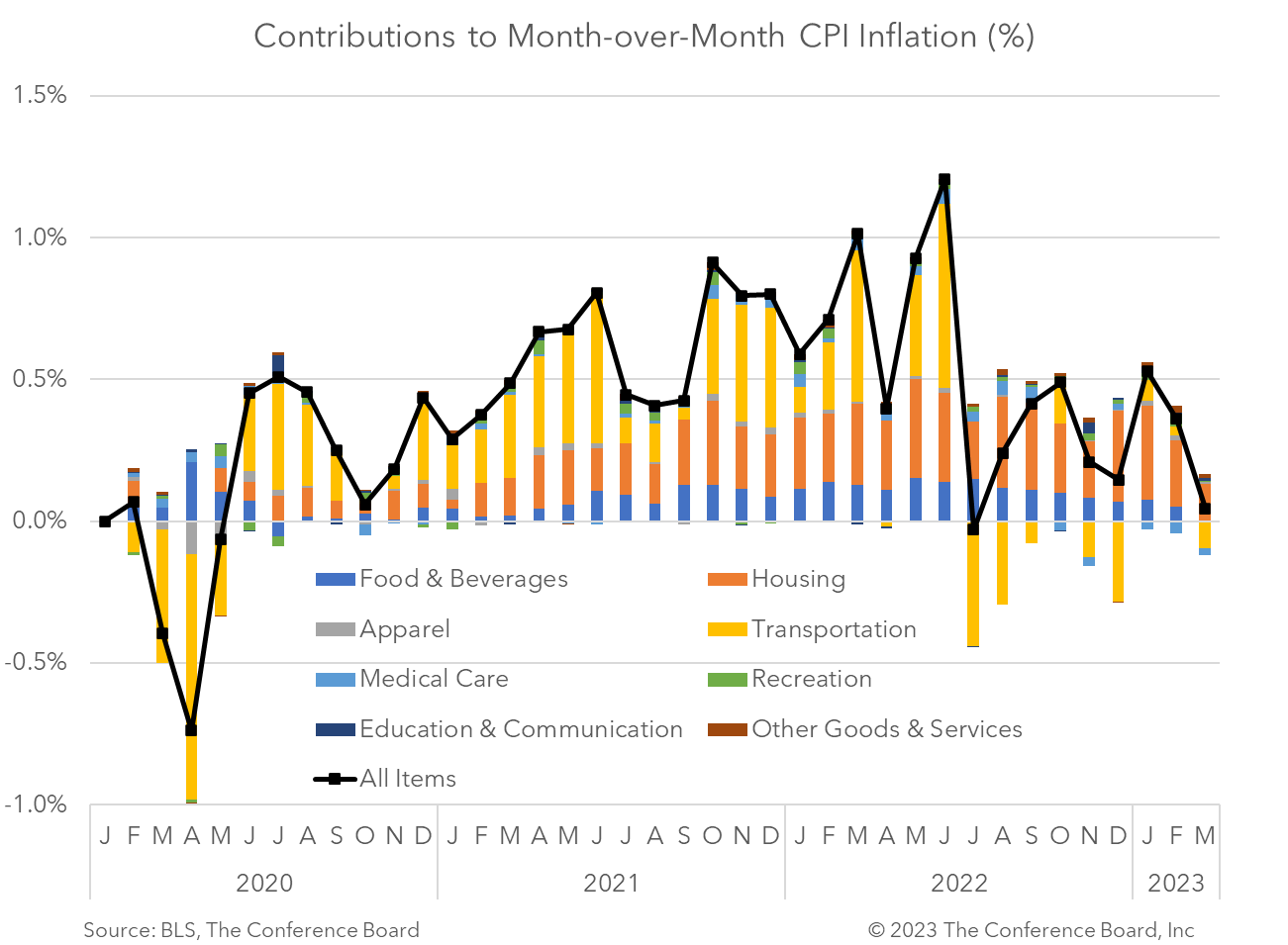
The March Consumer Price Index (CPI) showed that headline inflation slowed to 0.1 percent month-over-month (vs. 0.4% in Feb) and core inflation, which excludes food and energy, slowed to 0.4 percent month-over-month (vs. 0.5% in Feb). Year-over-year inflation rates for both the headline and core indices fell, but much more so for the headline index due to strong base effects. Many CPI components improved in the month, but rising shelter prices remained a major factor in the month-over-month increases in this month’s CPI readings. We do not believe these data are enough to keep the Fed from hiking rates further. March CPI readings showed relief across a variety of goods and services. For instance, food prices were flat for the month and energy prices fell. However, continued increases in shelter prices were responsible for approximately 60% of the inflation reported in the Core CPI. While relief in this key component of inflation is on the way, according to Chair Powell and private sector data on new rents, it will take time for the CPI numbers to fully incorporate this trend. While the 1.0 percent decline in topline year-over-year CPI looks like a big, positive development (and it is nice to see), it does not portend an end to the inflation debacle. This dramatic fall was due to base effects associated with the initial invasion of Ukraine one year ago, not a sudden turnaround in prices. Indeed, year-over-year Core CPI rose a touch for the month. We do not believe this CPI print puts the Federal Reserve in a position where additional rate hikes are no longer needed. We continue to expect two more 25 basis point hikes over the coming months and do not forecast any rate cuts until early 2024. Headline CPI slowed to 5.0 percent year-over-year in March, vs. 6.0 percent in February. In month-over-month terms this topline inflation metric fell to 0.1 percent, vs. 0.4 percent the month prior. According to the BLS, the index for shelter was the largest contributor to topline CPI this month. The energy index fell for the month and the food index was flat. Core CPI, which is total CPI less volatile food and energy prices, rose to 5.6 percent year-over-year in March, vs. 5.5 percent in February. The core index fell to 0.4 percent month-over-month in March, vs. 0.5 in February. As was the case with topline CPI, the increases in the core CPI was driven by shelter prices. Insights for What’s Ahead
March Inflation Highlights

Fed Doves Get Nice Holiday Gift as CPI Inflation Drops
December 18, 2025
FOMC Decision: Do Three Dissents Mean a January Pause?
December 10, 2025
Fed December Decision: Not So Clear Cut
December 09, 2025
September Inflation Pause Bodes Well for Fed Cut
December 05, 2025
September Retail Sales Show Consumers Taking a Breather
November 25, 2025
New Truce Offers Stability after US–China Trade Plummeted in 2025
November 05, 2025
